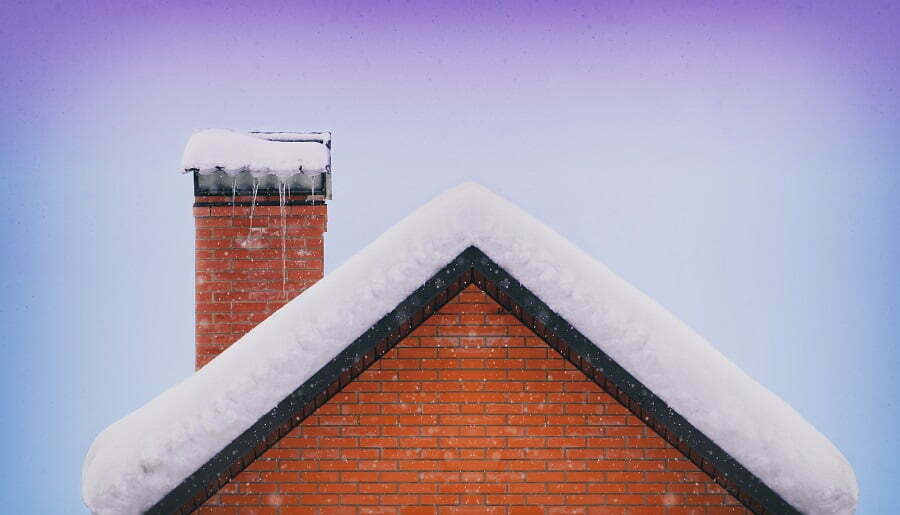Last updated on
Winter is a beautiful time of year with snowflakes falling, trees covered in white, and cozy fires keeping you warm at night. However, some things can make winter less enjoyable.
One thing people often forget about winter is how exhausting it can be for your home. The cold weather takes its toll on the structure and materials of your home, making it more prone to breakage than in other seasons.
Preparing for a winter season before it even starts will help you avoid costly repairs later on down the line.
Make Sure Your Roof Is Secure

Weather is unpredictable, and windy storms can wreak havoc on your roof. You need to check the weather forecast to keep a tab on the conditions. According to AON, a record $15 billion in losses were caused by winter storms in 2021. By ensuring everything is secure, you’re protecting your home from unnecessary damage and ensuring that you don’t accidentally flood the basement during heavy rains.
First, look for any cracks or leaks in the ceiling. You can do it easily by shining a flashlight up at it from below. If there are holes or dark patches, you’ll know that those areas need to be patched up before winter arrives.
Next, use your hands to feel along the edges of all tiles or shingles on your roof. If one feels loose or has a gap between two pieces (caused by weather damage), then it needs replacing before winter comes around again next year. You can also check for missing flashings (metal strips that hold down roofs) and ridge capping (the piece at either end of a slate).
Insulate Your Home
Insulating your home will help keep it warm. It is especially important if you live in an older home, where gaps and cracks may have developed over time. Insulation is also vital for preventing mold growth in areas that are difficult to reach, such as around the bathtub and kitchen sink.
There are many different types of insulation available – wool blanket, glass wool comb-in, or pipe lagging. All insulations work on the same principle, trapping air between two layers of fibers bonded together with adhesive.
If you’ve got an older home, your best bet is to add a layer of insulation to the exterior walls (if they’re not already insulated). If there’s no space left at ground level, consider adding more in the attic space above by installing boards across joists throughout several rooms so that one side faces the other before applying thick paper between them.
Repair Driveway or Pathways
One of the first things you should do to prepare for winter is to repair any damage to your driveway or pathways. Make sure there are no holes in the pavement and check for cracks in the concrete. If you have a retaining wall or fence next to your driveway, ensure it is secure and will not fall over during heavy snowfalls.
If you have a driveway, it may be time to consider a drainage system so that water does not pool at the bottom of your driveway and causes potential safety hazards when driving through it. We recommend hiring professionals who know how best to install these systems without damaging other parts of your property (such as lawns) if you can add this feature.
Check Your Plumbing
Before the winter season starts, you should always remember that your home’s plumbing system must be inspected and checked for leaks or damage. You can check the forecast days in advance and get cracking on the inspection and repair.
In a survey, 16% of respondents had their pipes freeze and explode due to cold weather. Inspect the water heater and hot water system to ensure they work well. To avoid any issues with your water supply during cold weather, it is necessary to ensure that your heater works properly and is ready for use at all times.
In addition, check all plumbing fixtures and faucets inside your house too. You can hire an experienced plumber if needed because inspecting them should not take too long but may still cost some money depending on what services you need to be done (e.g., repairing or replacing damaged pipes).
You also need to inspect basement floor drains because if they are clogged or obstructed with debris, it will impact how well water flows through them into basements during storms when rainwater accumulates quickly on top, so make sure no blockages exist before winter arrives.
Service Your Heating
If you have a gas or oil boiler, it’s important to ensure that it’s functioning properly and that the flames are not blocked. The same goes for any vents or flues, which should be clear of obstructions so that the heat can circulate through your home.
Also, check and change filters if necessary. Depending on how much dust and dirt collects in them over time, these should be changed at least once every two to four weeks. It is probably a good time if you don’t know when you last changed them.
Checking your thermostat settings is another important step in preparing your home for winter. Make sure they’re set correctly by using a thermometer inside your home (the temperature should be about 68 degrees Fahrenheit) before turning things off at night or going out of town for a while.
The Takeaway
If you want to make sure that your home can withstand anything the winter throws at it, weatherproofing is the best way to go. It’s an investment that will save you money and protect your home from any damage caused by the elements. According to industry experts, uninsulated homes lose 60% of energy through the walls.
Weatherproofing helps keep your home warm in winter and cool in summer, which helps reduce energy costs. A well-sealed house can also prevent moisture and mold growth, which saves time and money spent cleaning up messes that You could have avoided with proper weatherproofing techniques.
With a few simple steps, you can prepare your home for winter. You don’t have to spend a fortune on heating or insulation, but you will need to think about how you use the space around your house and its impact on energy bills. Some people have found that retrofitting their homes with insulation is more efficient than doing it yourself, so do some research before starting any projects.
Recap:



